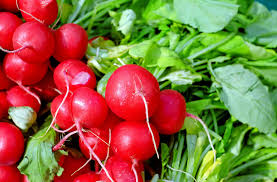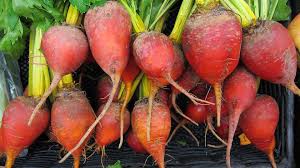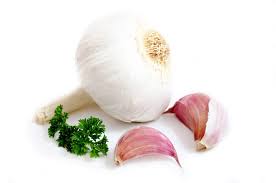Successful Tips on Growing Vegetables on a Slope

Growing and maintaining an edible garden is a great way of growing food crops that can save us a ton of money over time. This is a great way to ensure that we are harvesting crops that are healthy, one such garden that can benefit us is growing vegetables. The traditional way of growing vegetables is from a ground that is leveled or containers but what happens when the amount of space that is available is a slope how do you go about growing and harvesting vegetables from this type of area that may offer some challenges?
While I will agree you may have some challenges the good news is with the right information you can overcome these issues and reap a good harvest of your time invested. If this post describes you then you have come to the right place to gain insights into how to take advantage of hillside areas to have success. Before we go into the actual construction of a hillside garden let’s look at some of these challenges.
- Soil erosion
- Nutrient loss
- Having access to and working from these areas
- Irrigation runoff
- Rain runoff
- Plant selection
Soil erosion
Because the soil is on a hill it is at an angle that points in the downward position, during heavy rain downpours valuable topsoil is washed away causing plant root exposure which can dry out causing setbacks, these exposed roots can also weaken your garden plants.
Nutrient loss
Nutrient loss is another factor to consider, again as discussed earlier because of slope areas nutrients can get washed downhill and what you don’t want is to lose your investment (time, money, and plants). Plant nutrients are the building blocks of garden plant survival, therefore, it’s so important that we do all that we can to ensure that our plants don’t get robbed of these essential vitamins because plants that are healthy will give us a good harvest.
Having access to and working from these areas
Maintaining your vegetable garden on a hillside is so important to your plant’s health, maintenance practices such as weeding, watering, fertilizing, pruning, and garden insect pests control is a must. Slopes can present a challenge when working from these areas which means caution must be taken.
Irrigation runoff
Hand watering with a hose may become a challenge when watering from these areas, it’s best to install an irrigation system that will make your job a lot easier is worth the investment.
Rain runoff
Rain can make our job easier by letting nature take care of the watering for us but then again there is the challenge of water runoff where most of that valuable water is lost.
Vegetable selection
Vegetables that grow best on a hillside garden include.

- Carrots
- Radish
- Lettuce
- Peppers
- Beets
- Potatoes
- Turnips
- Onions
- Spinach
Herb selection

- Chives
- Garlic
- Basils
- Rosemary
- Thyme
Now that we have looked at these issues what can we do to counterattack overcoming these obstacles?
How To Grow Vegetables On A Hillside
Terrace Gardens
A great way to counter-attack is by installing a terrace garden, these gardens are mini gardens or plant beds that are raised beds that will help in accomplishing your goals. Raise bed gardens are mini wooden boxes that are simple to construct but will get the job done. For more on raised bed garden follow the link that has been provided. The photo that is shown here gives an example of one of many types of raised bed gardens.
The one in this picture is made out of bricks but these beds can also be made from lumber that’s a whole lot cheaper. Creating a box for each vegetable group placing them side by side ensuring that the spaces between them are equal and wide enough for you to walk from row to row. The number of raised beds that is constructed depends on the size of the area that you want to use for your garden.
The first step however before installing these boxes is to start with a plan, have a look at the entire area that is to be used this will give you a better visual of laying out the entire area. Once you know what you want and the time comes for the actual work to be done ensure that you’re wearing the proper clothing along with the right footwear.
Boots that have proper gripping should be worn because you are working on a slope and what you want is to keep your footing. The area should be cleared of weeds, plant material, and other debris. The next step is to grade or level the area, followed by installing your vegetable boxes in rows equally spaced apart.
Once your raised garden boxes are installed add good garden soil that is organic-rich, bring the soil level just under a few inches from the top because what you don’t want is when your water for water to runover washing soil out of the bed and probably seeds also. Now when the time comes to sow your seed do not overcrowd the boxes but read the label planting instructions. The amount of water, fertilizer, and time of seed germination all the way to the time of harvest should be on the package.
Benefits of raised bed gardens
Below are other benefits of raised bed gardens.
- These gardens will make it difficult for slugs and snails to reach garden plants
- The soil warms up much faster in the season
- Weeds are easy to manage
- Crop rotation is easier
- More growing space
- Less soil compaction
- Extend the growing season
- Plant’s roots will establish quicker
- Better water drainage
- Less nutrient loss
- Less soil erosion
- Installing a raised bed will reduce the risk of planting in contaminated soil
Bringing garden insect pest under control
The use of pesticides labeled for food crops will bring garden insect pests under control but since you’re growing on a hillside introducing beneficial insects in this area will offer help. Beneficial insects will eliminate garden insect pests by feeding on them, there are two ways of introducing beneficial insects into your hillside garden.
1. Installing plants that attract beneficial insects among your food crops known as companion planting will help will this process.
2. Another way to introduce beneficial insects into your garden is by purchasing them from your garden center and releasing them once you get home. The best time to release these insects so they don’t fly away is late in the afternoon just before the sunsets.
3. Ensure not to overwater which can lead to rot and other issues.
The final word on how to grow vegetables on a hillside
Growing vegetables on a hillside are possible, all it takes is knowing how and you are all set to garden successfully as you reap a good harvest of the time invested. Many homeowners are taking advantage of this garden type and making use of that available space so don’t let that slope stop you from growing your very own homegrown vegetables. Begin to work the soil’s from that slop area and join the many homeowners who are having good success.
About the author
Norman loves being in the garden, both at home and for his job....
he is 'Natures Little helper' being outdoors, growing his vegetables and flowers from an early age.
Now having spent over 22 years in the profession he want to give some of his knowledge to others...
his vast array of hints and tips you will find scattered over this site will help you no end growing plants in your garden.

With many more people growing vegetables now space is always a premium, so reading your article about utilizing even the hilly areas that we have at our disposal was a great idea. You cover some valid points about the difficulties you could encounter and also give some great solutions to overcome these. I am sure this article will be beneficial to many vegetable growers around the world.
I know that many persons may not want to but it is great to remove apart of that flower bed adding our veggie garden that has so many benefits. I am glad to help and thanks so much for your kind words. All the best to you and have a good day.
I thought growing by the hillside would be a difficult task until I decided to carry put a research and coming across this post has been nothing short of blessing to me. In all honesty, I have to say that growing vegetables always give the perfect offer to eating or assessing the best vegetables since sometimes, getting fresh ones are not always the better option. Thanks so much for sharing
Thanks my friend, and you are right, when growing our own homegrown veggies we will not only be eating healthy but fresh which is a win-win for us.
As I know from your guide that Growing vegetables on a hillside is possible, all it takes is knowing how and we are all set to garden successfully as we reap a good harvest of the time invested. Many homeowners are taking advantage of this garden type and making use of that available space so don’t let that slope stop us from growing our very own homegrown vegetables. Very useful for all.
We can grow gardens just about anywhere, all it takes is some planning and we will be harvesting our edibles grown by our own hands which I think is so great. Have a good day.
Soil erosion, Nutrient loss, Irrigation runoff, etc. are not important for performing to grow vegetables on the hillside of any region, we might follow some methods and affords to cultivate vegetables. Agriculture is a firming process in any country.
I am highly energetic in this sector and have been planting a lot of vegetables alongside hills. But I had no idea about the process of how to grow more efficiently on the hiss.
Meanwhile, I found this website about the tips and tricks of vegetable cultivation.
I am very thankful to this website as it has been suggested a lot of powerful methods to grow vegetables.
Hello, I am so happy to help and thanks so much for those kind words. It is so amazing to think that if we think outside of the box and with proper planning we can garden just about anywhere. Thanks so much for stopping by and all the best to you. Have a good day.
Hey, I enjoy a lot while reading your article and find it very helpful for everyone like me. Growing and maintaining an edible garden is a great way of growing for food crops that can save us a ton of money over time. This is the great way to ensure that we are harvesting healthy crops, one such garden that can benefit us is growing vegetables. Thanks for sharing such useful info.
Yes, having an edible garden can have so many benefits. These gardens are a great investment and I would encourage anyone to start this type of garden. So glad to help and have a good day.
Hello there,thanks for sharing this awesome article I just moved to the most hilly part of my state and I was wondering how what to do to my backyard garden.
After reading your article I think I am good to go as I learnt alot especially about soil erosion as I haven’t done any plant on land with this severe conditions.
Thanks alot,
Regards,
David.
Hello, that is great news that you have found this post to be so helpful. Wishing you the best of success with your garden, have a good day.
Honestly, farming generally needs to be properly understood, and hillside farming can be very technical like you identified. There is a great need to identify the topography of the soil and build raised bed garden against the slope. Getting the slope right and build against it will help to increase the water retention of the sloppy hills and also like you rightly identified.
Yes before we plant we should seek to know all we can so we can have success. Thanks so much for sharing also, all the best to you and have a good day.
Hi Norman! This is a great idea as Hills expose your vegetable beds to increased air flow, while the slope also pulls water away from your vegetable bed. For me these two factors can cause soil to dry out faster than normal. Also terracing the hillside provides for a more even ground surface on which to work and allows you to better manage irrigation.
Thanks!
Thanks so much, I am happy to help and you yourself have knowledge in this area which is so great. Thanks for sharing and all the best to you. Have a good day.
I’ve been interested in farming for quite some time hence this site picked my interest.
Great site and greatly appreciate for this valuable information as this can also be use in other farm areas like home garden or something similar. Though we don’t have a hillside like what was in this article but it’s great to know this valuable stuff, specially on how to grow your beautiful and nutritional veggies.
It is also very rewarding to see your crops grow healthy specially during harvesting time.
Hello and thanks so much for those kind words, it is so good to grow our own food crops from our backyards. This way we can grow them the healthy way while saving those hard-earned dollars. Wishing you the best of success and have a good day.
Thanks a lot for sharing with us this amazing tips about growing vegetables on a hillside. For me is the first time when i find that growing vegetables on a hillside is possible. You put here an very informative tips and explanation that help us how to do it. My favorite vegetables are carrots, radish, beets and potatoes.
I can’t wait to try this method explained by us. If you don’t mind i would like to share your article on my social media account where i have a lot of friends who want to grow their own vegetables.
Hello so happy to meet you and I am glad to help, Thanks so much for those kind words and I am wishing you the best of success with your hillside garden project. Please let me know how it goes, I would be more than happy if would share this post with your friend’s thanks I really do appreciate it!! wishing you the best of success, have a good day.
This is a very good and informative article. I have been a gardener for so long now and but I have not much experience on how to grow vegetables. This article has taught me rain that help in growing vegetables and make good chances of harvesting when due. Thanks for sharing and hope to see more great articles that teaches more such as this.
So good to hear that you are in this exciting field and that I could help. Wishing you all the best of success. Have a good day.
Hi Norman,
I’m grateful to have found your article! We’re moving from a relatively flat property to a hilly one & ive been stressing about planting on a hillside. Thank you sir for sharing your knowledge. Do you think that using large stones would work for borders within a terraced garden?